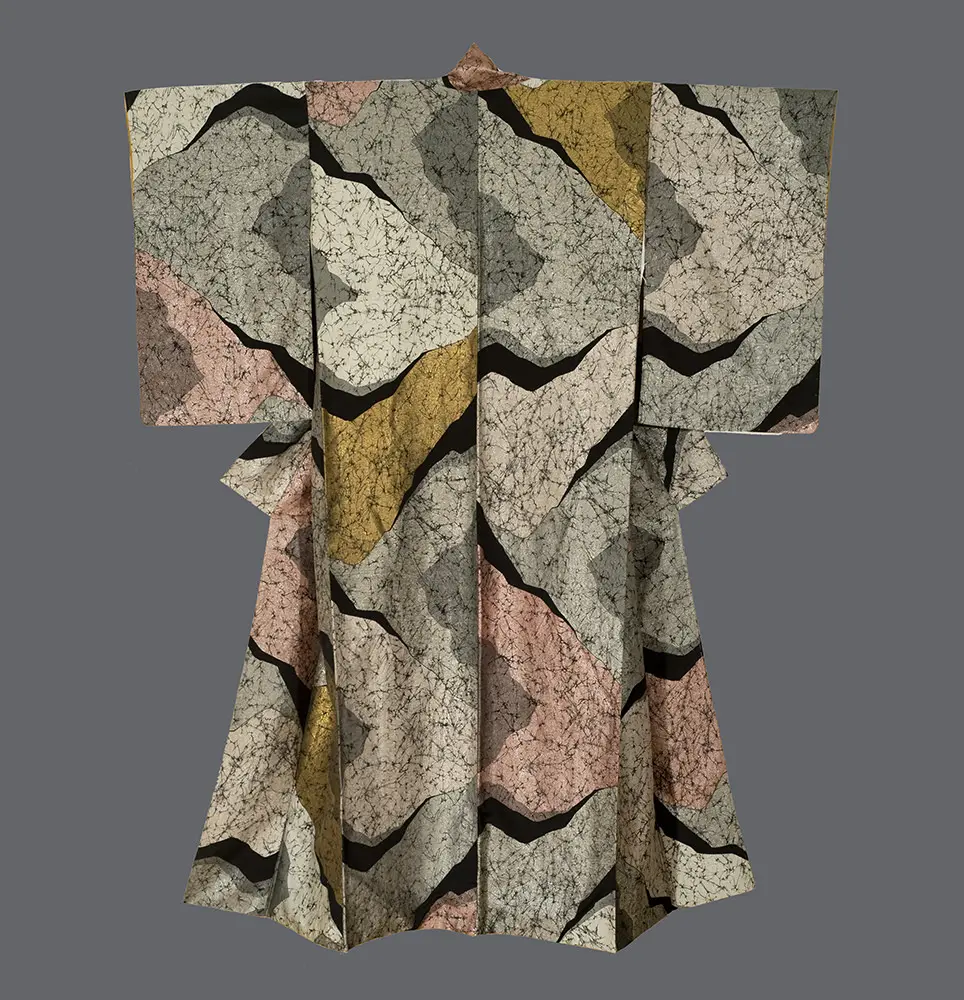This silk winter kimono features bold, irregular geometric forms rendered in muted earth tones—cream, dusty rose, olive gold, and gray—outlined with dramatic black contours that create a fragmented, almost geological appearance. This aesthetic strongly evokes the influence of Abstract Expressionism and mid-century modern design movements, where organic abstraction and color field painting were prominent, suggesting how Japanese textile artists absorbed and reinterpreted international artistic trends of the period.
The close-up details reveal the sophisticated supplementary weaving technique, where additional weft threads create raised textural patterns that appear almost embossed against the silk ground. The crackled, web-like surface texture visible throughout each color field suggests inspiration from natural phenomena such as dried earth, aged stone, or weathered surfaces, connecting the garment to wabi-sabi aesthetic principles that find beauty in imperfection and the passage of time. The winter weight of the silk and the complex weaving structure would have provided both warmth and visual richness during colder months. This kimono represents a mature evolution of Japanese textile arts, where traditional supplementary weaving techniques were employed to create thoroughly modern, abstract compositions.
Its measurements are 50 inches (127 cm) from sleeve-end to sleeve-end and 62 inches (157 cm) in height.
.avif)








